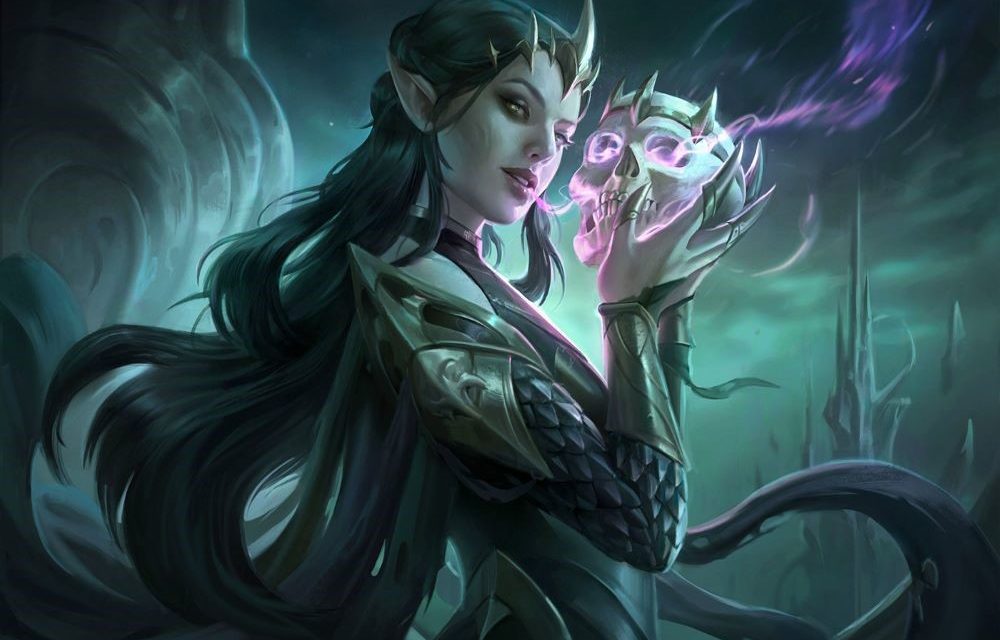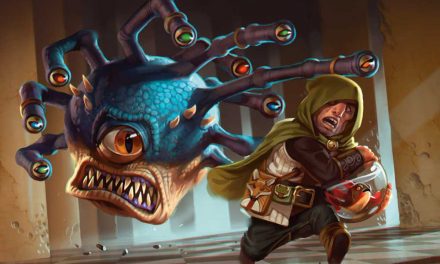Villains are an important part of any Dungeons and Dragons campaign. They provide a challenge for the heroes and help to make the world feel more alive.
One of the most important aspects of a villain is their spell selection. Even if they aren’t primarily a spellcaster, the best villains know to have a few tricks up their sleeve!
Sure, there are some great go-to spell options that will help your villain blast everyone and everything in their path to kingdom come.
But I wanted to take a moment to talk about some of the excellent (and underused!) spells you’ve got at your disposal.
The spells on this list will help make your BBEG truly terrifying!
These are 10 excellent spells that every villain should consider adding to their arsenal!
Scrying
We’re kicking this list off with the humble Scrying spell.
Not to put too fine of a point on it, but Scrying might as well be “Villain Spells 101”. It’s that useful and important!
This is a great way for villains to keep track of the party’s movements. Scrying on the party, your villain can potentially learn what they’re planning to do and prepare against it.
So, if the villain learns that the party is planning to attack his lair by breaking in through an underground cave, he might have his minions set some extra traps and wait in ambush.
Not to mention, it’s also useful for a villain that’s wanting to keep an eye on their lieutenants!
If your BBEG doesn’t have the Scrying spell, they should at least have some way of accessing it. They might have a magical artifact that they can use to scry on the party or an ally with a knack for divination magic.
Magic Mouth
Who doesn’t love a good villain monologue?
The problem is that so many Dungeon Masters wait until the party is face-to-face with the villain to bust out the monologue they prepared.
Needless to say, it’s very rare for a villain to actually get their epic moment where they explain their evil plan and taunt the party.
Magic Mouth is a great way to fix that issue.
Pre-recorded messages are magically channeled through objects when a specific trigger condition is met.
Imagine the party moving through a long hallway with large heavy doors. Each time they open the doors and enter the next room, the next part of the villain’s monologue plays.
As the party moves through the hallway with their guard up, the tension builds as nothing moves to attack them. In each room, it’s just the taunting voice of the villain.
When the final message plays and the party opens the next set of doors, they come to the villain’s chamber. With their monologue complete, combat begins.
Magic Mouth gives you a lot of creative freedom when you’re building the villain’s lair.
Not to mention, it also creates a certain feeling of doubt for the party. If the villain took the time to prepare these messages, have they also been manipulating the party this entire time?
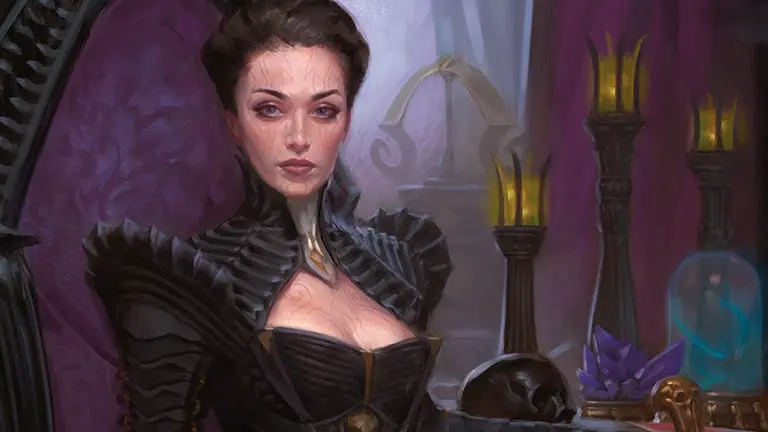
Contingency
Contingency is an incredibly fun and useful spell that rewards planning.
When casting it, you choose another spell of level 5 or lower that has a casting time of one action and can target yourself. Expending spell slots for both contingency and the chosen spell, you then set a trigger that activates the contingency.
Even better, this contingency lasts for 10 days which means that it’s perfectly reasonable for the villain to have cast it on themselves well in advance of their encounter with the party.
This might let the villain get an automatic use of Greater Invisibility when their health drops to a certain amount.
If they know the party has a character that is fond of casting debuffs, they might have a Dispel Magic ready to deal with that.
One of my personal favorite uses is combining this with Dimension Door. The second my BBEG falls to 10% of their total hit points, they’ve got a 500ft teleport to make their escape.
The applications here are virtually limitless!
Contingency is especially useful if you want your villain to be a recurring foe for the party.
You Might Like: The Vital Tip Every DM Can Learn From South Park
Chill Touch
It might seem a little weird to include a cantrip on this list, but Chill Touch is just an incredible option to give your villains!
The damage is decent enough, but it’s the secondary effect that makes Chill Touch so wonderfully devious.
In a typical boss fight, the party is likely to be relying on their healing spells to stay in the fight. But when a creature is hit by Chill Touch, they aren’t able to regain hit points until the start of the caster’s next turn.
It can go from frustrating to purely devious if this is used well.
Let’s say one of the party members is about to go down. Hitting them with Chill Touch means they won’t be able to get any healing.
If Chill Touch was enough to drop them to zero hit points (and the BBEG is just feeling especially diabolical), that could be a death sentence for the character.
Maybe it’s a jerk move to counter the party’s healing, but the villain isn’t typically a particularly nice person…

Geas
Used well, Geas (pronounced “gesh”) is a wonderfully terrifying spell with a ton of different applications.
The point of the spell is to force the charmed target to either take a certain course of activity or refrain from doing so.
If the charmed creature acts against these instructions, they take a whopping 5d10 points of psychic damage.
While they can’t take this damage more than once per day, they’re under this enchantment for 30 days! If cast at a higher level, it could last as long as an entire year or even forever!
Now, 5d10 is a potentially huge amount of damage.
Perhaps the villain decided to enchant a friend and confidant of the party. The villain is having this person sabotage the party’s efforts by giving them bad information, selling them faulty equipment, or some other such thing.
Unless this person is an active adventurer themselves, the damage dealt by Geas is enough to outright kill them. Unable to explain that they’re cursed, the NPC now works against the party.
But maybe the villain is able to get a member of the party alone.
They might curse the party’s healer by forcing them to refrain from healing their allies. Perhaps they force the party’s Rogue to steal their allies’ magic items and surrender them to the BBEG’s minions.
Especially at the lower levels where 5d10 damage is too much to handle well, this can entirely derail a party.
For villains who are expert manipulators, Geas is a must-have.
Disintegrate
I’m trying to stay away from damage spells on this list. Instead, I’d prefer to show you the options and utility of other less common spells.
But I just love Disintegrate too much to not include it!
There’s a certain point in D&D 5e where death is more of an inconvenience than anything. If a character somehow dies, a quick Revivify or trip to the local temple can bring them back.
As early as level 5 or 6, adventurers tend to get comfortable and feel (mostly) indestructible. But that’s exactly why Disintegrate had to make it onto this list.
It’s one of the ultimate humbling spells!
For starters, it does a BOAT LOAD of damage. 10d6 + 40 damage means the target is going to be taking AT LEAST 50 points of damage if they fail their Dexterity saving throw.
Furthermore, it’s the ever-reliable force damage.
But what makes this so dangerous, dastardly, and deliciously diabolical is its secondary effect. Specifically, a creature reduced to zero hit points by the Disintegrate spell is reduced to fine ash.
Not to cheapen the experience, all their nonmagical equipment is also destroyed.
With no death saving throws and no corpse left behind, only casting Wish or True Resurrection can bring them back to life.
Related: The Wish Spell in 5e Explained
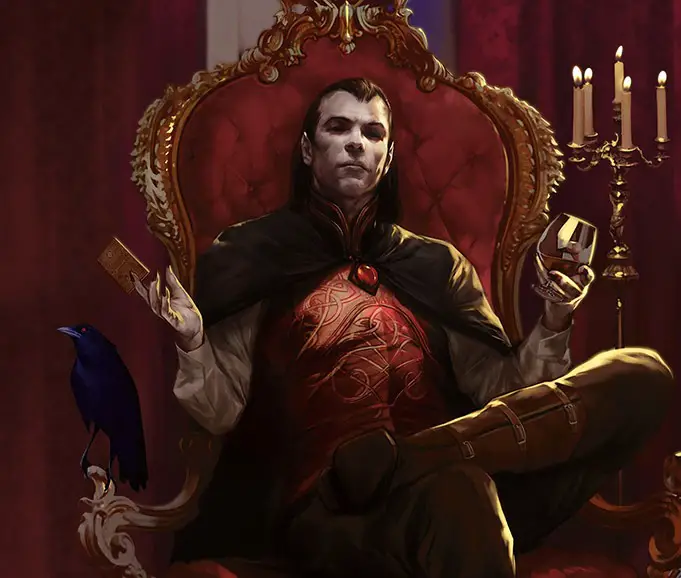
Counterspell
I just love Counterspell so much no matter what side of the DM screen I’m on. There’s just something extra fun about being like “actually… no…” when an enemy is trying to cast a spell.
At least in my experience, it seems like a lot of villains don’t really have ways to counter spellcasters. This means that the party’s casters can typically run the entire combat unchallenged from the backline.
If a villain has any level of spellcasting ability, this should absolutely be on their spell list.
The trick is knowing when to use it. It’s often better to deal with the party’s weaker spells and save Counterspell for when it really matters most.
For example, if the Wizard is about to launch a fireball and wipe out all of the BBEG’s minions, it’s worth using this. Otherwise, the party can just gang up on the villain and beat them with pure action economy.
Not to mention that there’s also a certain admitted pleasure in countering healing spells.
Like I said when talking about Chill Touch, it’s a jerk move but it’s not exactly off-brand for most villains.
Dominate Person
Villains tend to have a love for underhanded tactics and few are as underhanded as Dominate Person!
The effects of being able to turn someone against their own party are huge. Not only is that one less person on the party’s side, but they’ll probably be hesitant to attack their ally.
Heavy-hitters like Paladins tend to have lower Wisdom scores which means it’s possible for them to stay under the villain’s control for the entire duration of the spell.
But there’s yet another angle to why Dominate Person is so wonderfully villainous!
If your villain has taken control of someone, they can use their action to take total and precise control of the character. This means that you can immediately start making them use their most important resources!
Taking control of a Paladin, your villain might have them start burning through their Divine Smites. If you snare a Wizard or Sorcerer, start having them burn through their highest level spell slots.
Of course, the “unicorn” situation is managing to gain control of the party’s healer.
It’s rare because characters like Clerics and Druids are great at Wisdom saves but having them use their heals on the villain is just simply insidious!
To use this well, you’ll want to find a way for the villain to use this before the combat begins. Otherwise, the target will have advantage on their saving throw which makes this much riskier.
Enchantment magic never seems to be viewed as particularly dangerous, but Dominate Person is a great example of how wrong that is!
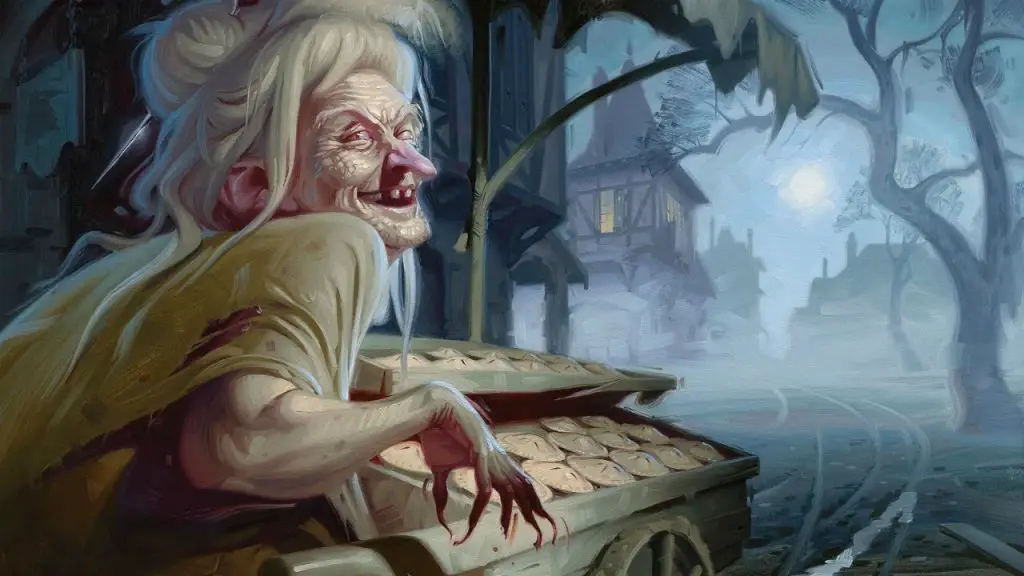
Forcecage
I’ve tried to keep most of this list in the low to mid-level range. But I just have to include a few of my favorite higher-level options.
Forcecage is a great “sit” spell.
By that, I mean that you’re forcing those in the area that you choose to become stuck in an invisible box. It can’t be countered with Dispel Magic and the creatures inside it cannot leave by any nonmagical means.
Even if certain characters are able to travel to the Ethereal Plane, the box will still have them trapped there!
Beyond waiting for the spell’s duration to run out, the only way to escape Forcecage is to attempt to teleport. But even that will require a Charisma saving throw. If the character fails the save, they waste the spell slot.
A villain could certainly use this as a “divide and conquer” strategy. By sealing the party’s tougher members in the cage, they could turn their full attention to attacking the squishier characters.
It can also be used to create some spectacularly cruel villainous moments.
A game I was in once had the villain (a Rakshasa) seal the party’s Rogue in a Forcecage after he tried to double-cross her. The Rogue now had to watch in horror as she used her Ring of Meteor Swarm to wipe out the entire party and our keep.
When I think of terrifying villain moments, that scene is immediately what comes to mind.
So, yeah, Forcecage is great for both strategic and dramatic purposes!
You Might Like: How To Run Published Adventures in D&D 5e
Feeblemind
Feeblemind is possibly the biggest jerk move in 5e, but it is so incredibly fun.
As a level 8 spell, it’s unlikely to show up before the upper-mid tiers of play unless the party is just ENTIRELY out of their depth.
But it can entirely derail a party’s progress.
Failing an Intelligence saving throw means the target’s Intelligence and Charisma get reduced to 1. They aren’t able to cast spells, activate magic items, understand languages, or communicate in any intelligible way.
Ouch!
To make things more intense, they only get a saving throw once every 30 days.
If the party doesn’t have a spell like Greater Restoration or Heal at the ready, they’re going to have a very hard time dealing with the villain.
The afflicted party member isn’t necessarily useless, but they definitely aren’t going to be anywhere near as helpful as you’d prefer!
In most cases, the party is going to have to spend the time and/or resources to get rid of the effects on their ally. In the meantime, the villain is able to go about their business largely uncontested!
This is one of those spells that I particularly love to give villains when I really need the party to hate them.
To date, they always do!

Simulacrum
For all the reasons that I like giving my BBEGs the Simulacrum spell, the Clone spell is also great. But I’m ultimately siding with Simulacrum for this list.
Just imagine the look on the players’ faces when they finally confront the BBEG. They’ve got the villain cornered and are thinking “this is it!”
But as the fight ends, the Simulacrum falls apart and the party realizes that they’ve been fooled. If the Simulacrum gave them a hard time, it will likely even make them start to worry about how tough the actual BBEG is.
Sometimes things just aren’t quite right for the final showdown just yet. This is a way to give the party a taste of what the BBEG is capable of without having to bring that part of the campaign to a close.
In fact, the idea of a villain who lurks in the shadows while having duplicates of themselves managing their day-to-day affairs can be fun. It’s actually one of the big themes of one of my favorite D&D villains, Manshoon!
Related: Who Is Manshoon?
Just be aware that the magic required to use this spell is very powerful and requires expensive materials. Additionally, it takes 12 hours to cast the spell!
If your villain is going to be using this spell, make sure they clear their schedule first!
Conclusion – 10 Great Spells for Villains
There are plenty of spells in D&D 5e that might get looked over by players but can offer some great utility to villains or other NPCs.
Do you have any spells that are your go-to picks when making a villain? Share your favorites in the comments below!
Want all the latest player guides, DM tips, news, reviews, and more for D&D 5e? Sign up for the Tabletop Joab newsletter below!
You can also follow me on Facebook and Twitter.
If you found this article helpful and want to support the site, you can buy me a coffee here! (It’s not expected, but very appreciated!)

